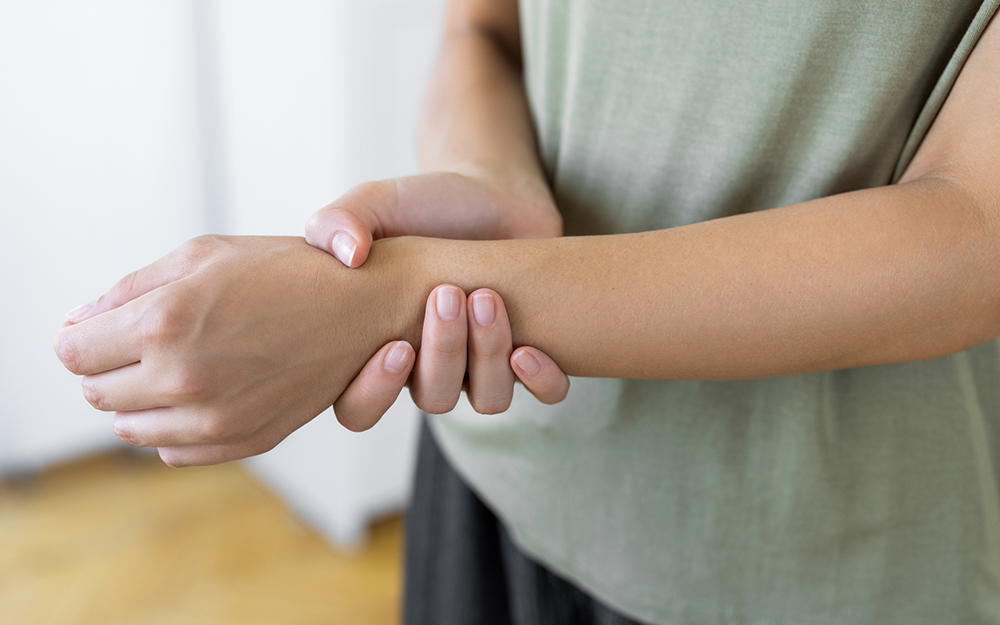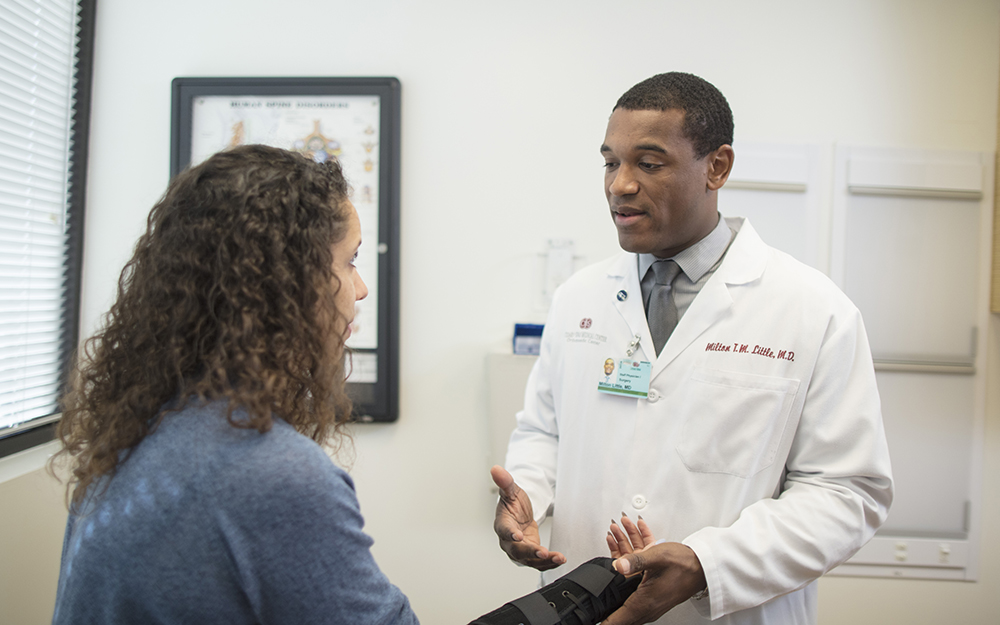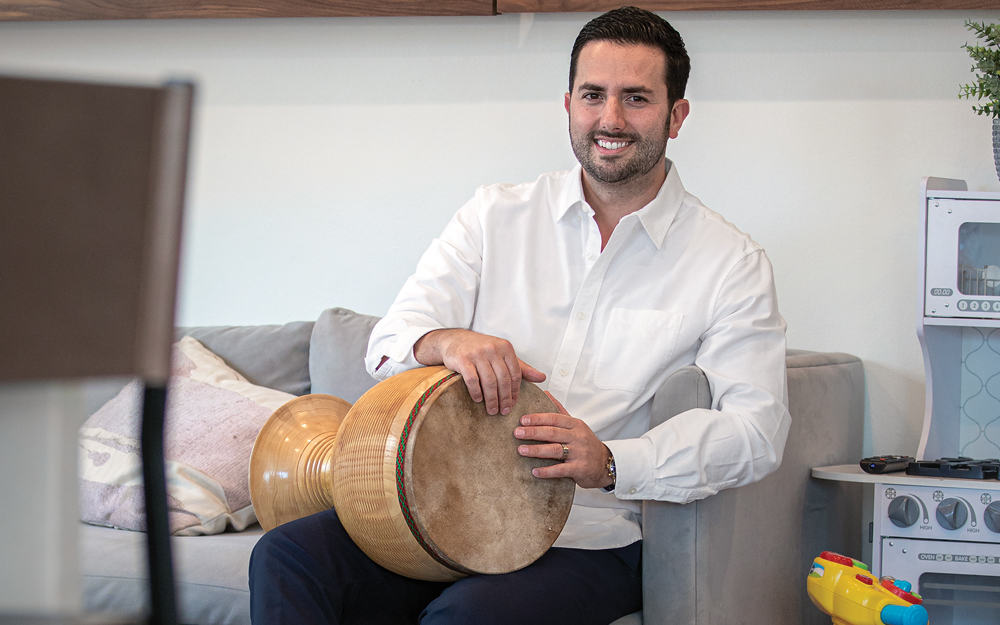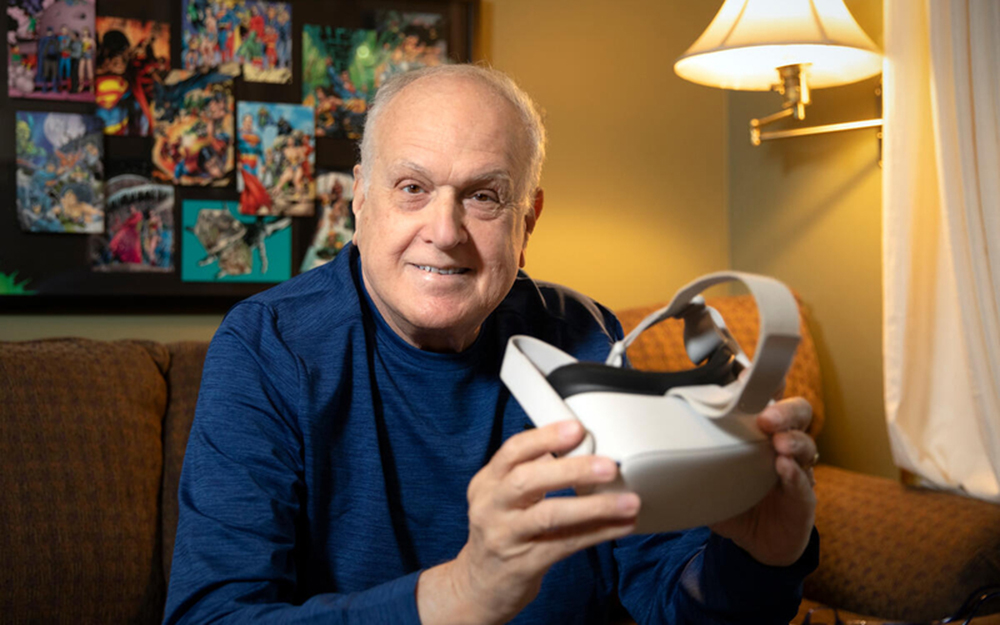Hip Health: Expert Guidance on Maintaining Your Joints
Date
March 4, 2022

Date
March 4, 2022
Credits
Medical providers featured in this article
In Brief
{{cta-block}}

The human hip is one of the body’s largest weight-bearing joints. Coming under significant strain from daily wear and tear can cause the hip to deteriorate or lose strength over time—it also makes the joint more prone to injury.
Helping patients minimize hip pain and return to a more active lifestyle is Dr. Michael Banffy, orthopaedic surgeon and sports medicine specialist at the Cedars-Sinai Kerlan-Jobe Institute.
Dr. Banffy emphasizes the importance of joint preservation, working with patients to avoid total hip replacement through lifestyle modifications and minimally invasive procedures. We asked him to give his expert advice on how to treat hip pain and maintain hip health.
"The single most important thing for people with hip pain is not to ignore it. I always encourage people to get evaluated by a specialist, who can assess how severe any damage might be."
What advice do you have for people experiencing hip pain?
Michael Banffy: The single most important thing for people with hip pain is not to ignore it. The hip joint is a resilient joint. Unfortunately, I often have patients in their 30s show up with significant arthritic damage they might have avoided if they had visited an orthopaedic specialist when they were younger.
I always encourage people to get evaluated by a specialist, who can assess how severe any damage might be. Then we can make a plan to prevent further deterioration.
Are there steps someone can take to minimize hip pain and improve their joint flexibility without undergoing surgery?
MB: Absolutely. There are non-invasive interventions that can stop the advanced development of cartilage damage. Having a healthy body mass index means you’re putting less strain on your hips, so losing weight can help if a person is overweight or obese.
Strengthening core muscles, like the gluteal muscles, can also be very effective in stabilizing the hip. Physical therapy can also help. Another approach is limiting higher impact activities. I don’t like telling people they can’t run, but sometimes I will suggest they stick to running a few miles per week instead of marathon training.
What happens when lifestyle changes don’t work? Does this mean someone needs a hip replacement?
MB: Not necessarily. If more conservative methods such as physical therapy don’t help, there are minimally invasive procedures we can do, like an arthroscopy. An arthroscopy is a procedure to treat problems inside a joint. Ultimately, these types of procedures may prevent further damage and the need for a hip replacement, or at least delay one.
Why is it a good idea to stay on top of hip health and take action before the problem progresses?
MB: I'm a dedicated proponent of the “an ounce of prevention is worth a pound of cure” school of medicine. If we’re able to correct the biomechanics of the hip early enough – whether through weight loss, physical therapy, an arthroscopy or some combination of these – we can potentially sidestep major surgery, which comes with an additional series of risks.
In the case of a total hip replacement, you’re removing bone and putting in large metal implants, and that can cause both short- and long-term issues. Also, total hip replacements don’t last forever, so if you’re young when you have the surgery, you may end up having to do it again later on. If possible, sticking with your own original hips is definitely the way to go.





